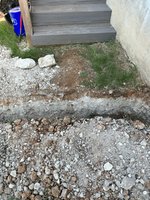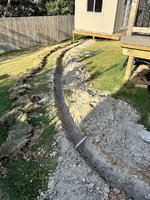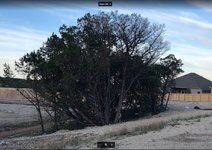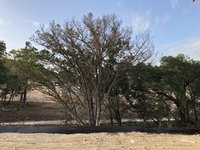Maiden69
Masterpiece
I've been hearing about ground growing and how awesome it is for tree development, but that is not always the case. If you live in a state where the soil is pretty much garbage for growing anything, you need to look up to other alternatives. When I moved to Texas I noticed how much smaller the trees are here, comparing with other states and countries I have lived on. Oaks, elms, bald cypress and pretty much any other species that you can find here and in states with rich soil and smaller here. I have seen bald cypresses growing along the road and in parking lots that are probably 15-20 year old, yet they are almost the same thickness as my 5 year seedling.
When I decided to start developing material, I opted for above ground beds. At the moment the reasoning was that I lived in a residential area with a small backyard. Then after researching soil alternatives I realized that what most people use, was not available here... at least for bonsai development. To me, potting soil used for garden vegetables is substandard, and will require a lot of cleaning once the tree is removed from the ground and placed into a pot. It was then that I decided to use Root Pouch grow bags, after seeing the results @cmeg1 had with them it was a no brainer.
Back to the reason why I will never ground grow here... we just had a company come and dig a trench to run water into our studio. Take a look at the wonderful soil we have in our backyard. And from talking to the guys doing the trench, this is pretty much the same everywhere, unless you live in an area that was previously use as a growing field and was prepared for it. We have a whooping 2-3" of top soil above hard dirt/clay/slate/rock bed.
After seeing this, I think I am going to double or triple my biochar treatment, and as soon as it starts to rain I plan on treating the entire area with Penterra, to see if I can push as much biochar and nutrients a few inches further down the ground. I asked the contractor if coring will help and he stated that he thought the small coring machines they rent at Home Depot probably won't have enough weight or force to pierce though. He recommended the treatment of Penterra for a few months before even trying. I have a hand help corer and I tried to puncture the ground... LOL, that was a no-go.
I'll update during the week with pictures of my grow beds and results I have attain with them.


When I decided to start developing material, I opted for above ground beds. At the moment the reasoning was that I lived in a residential area with a small backyard. Then after researching soil alternatives I realized that what most people use, was not available here... at least for bonsai development. To me, potting soil used for garden vegetables is substandard, and will require a lot of cleaning once the tree is removed from the ground and placed into a pot. It was then that I decided to use Root Pouch grow bags, after seeing the results @cmeg1 had with them it was a no brainer.
Back to the reason why I will never ground grow here... we just had a company come and dig a trench to run water into our studio. Take a look at the wonderful soil we have in our backyard. And from talking to the guys doing the trench, this is pretty much the same everywhere, unless you live in an area that was previously use as a growing field and was prepared for it. We have a whooping 2-3" of top soil above hard dirt/clay/slate/rock bed.
After seeing this, I think I am going to double or triple my biochar treatment, and as soon as it starts to rain I plan on treating the entire area with Penterra, to see if I can push as much biochar and nutrients a few inches further down the ground. I asked the contractor if coring will help and he stated that he thought the small coring machines they rent at Home Depot probably won't have enough weight or force to pierce though. He recommended the treatment of Penterra for a few months before even trying. I have a hand help corer and I tried to puncture the ground... LOL, that was a no-go.
I'll update during the week with pictures of my grow beds and results I have attain with them.




